ubushina’s creations by using “utsushi” technique
sponsored
Inspired by Japanese traditional porcelain surface, ubushina has developed custom-made textured papers for ‘Waqoo Mii-dera’ (Design: Intentionallies), a renovated project in an authentic temple. photography: Toshiyuki Yano
This will be our 2nd round of interview to introduce materials that were created through collaboration works with “ubushina”, a project that connects traditional Japanese techniques with designers. We had the opportunity to talk to Director Yudai Tachikawa during this interview and listen to him talk about stories on the topic, “utsushi”, a technique that had been supporting the growth of Japanese cultures.
“Utsushi” is a word used in craftsmanship industry, and it refers to either a work created from modeling on a particular item, or the technique itself.
"Japanese interior designer Shigeru Uchida once wrote, the word Utsuroi changed into Utsushi. Applying his thoughts to our creations, 'shifting' means the transition of materials. 'projection' is to project something like a reflection, and 'modeling' is to complete a work by fixing it on an appropriate material" says Tachikawa.
From their past projects, we will introduce 3 particular examples that were born from the idea of “utsushi”.
A.N.D. designed the Japanese restaurant floor at Palace Hotel Tokyo. Collaborating with ubushina, custom-made brass-made mesh was installed for the ceiling. photography: Nacasa & Partners
Brass-made mesh
A brass wickerwork is the material that was born from the “transferring” of a traditional craft technique to another type of material, and this material was the one that was used on the ceiling of a Japanese dining area inside Palace Hotel Tokyo. The person who worked on the design was Ryu Kosaka from A.N.D.
Patina textured brass wickerwork was created for the hotel project. (photography: ubushina)
“The designer Kosaka consulted me to see if it would be possible to create brass wickerwork, which would be appropriate to be installed in a genuinely Japanese space. We had a hard time weaving brass into wickerwork since brass does not have the flexibility like tree barks, but by weaving it into a panel shape, we were able to create a material with high workability in the end. We also had some difficulty with finishing it up in antique-looking colour.”
Just as the designer wished, this became a material that possesses grace with a Japanese feeling; the material where mesh lines appear only if you take a closer look at it.
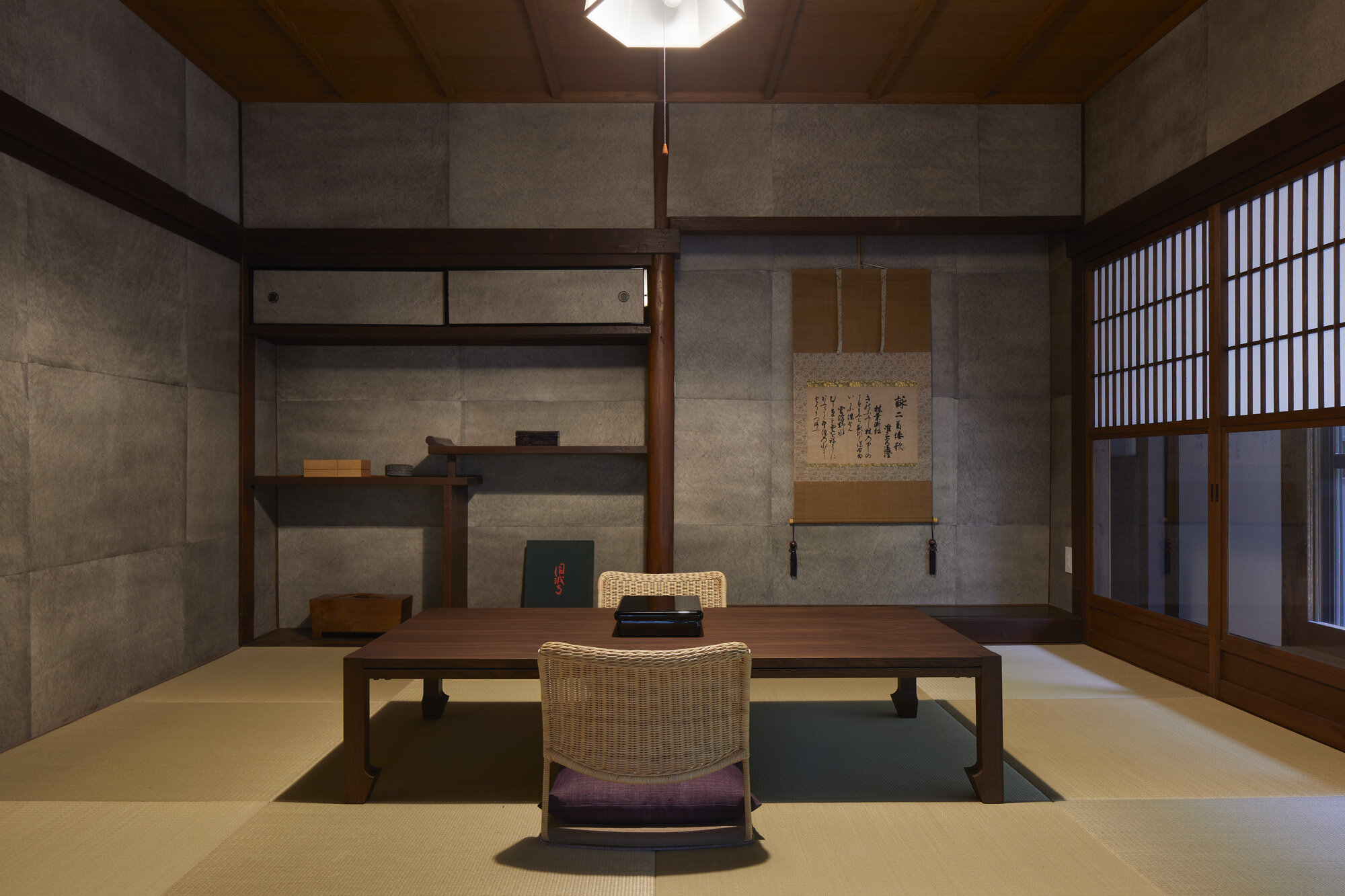
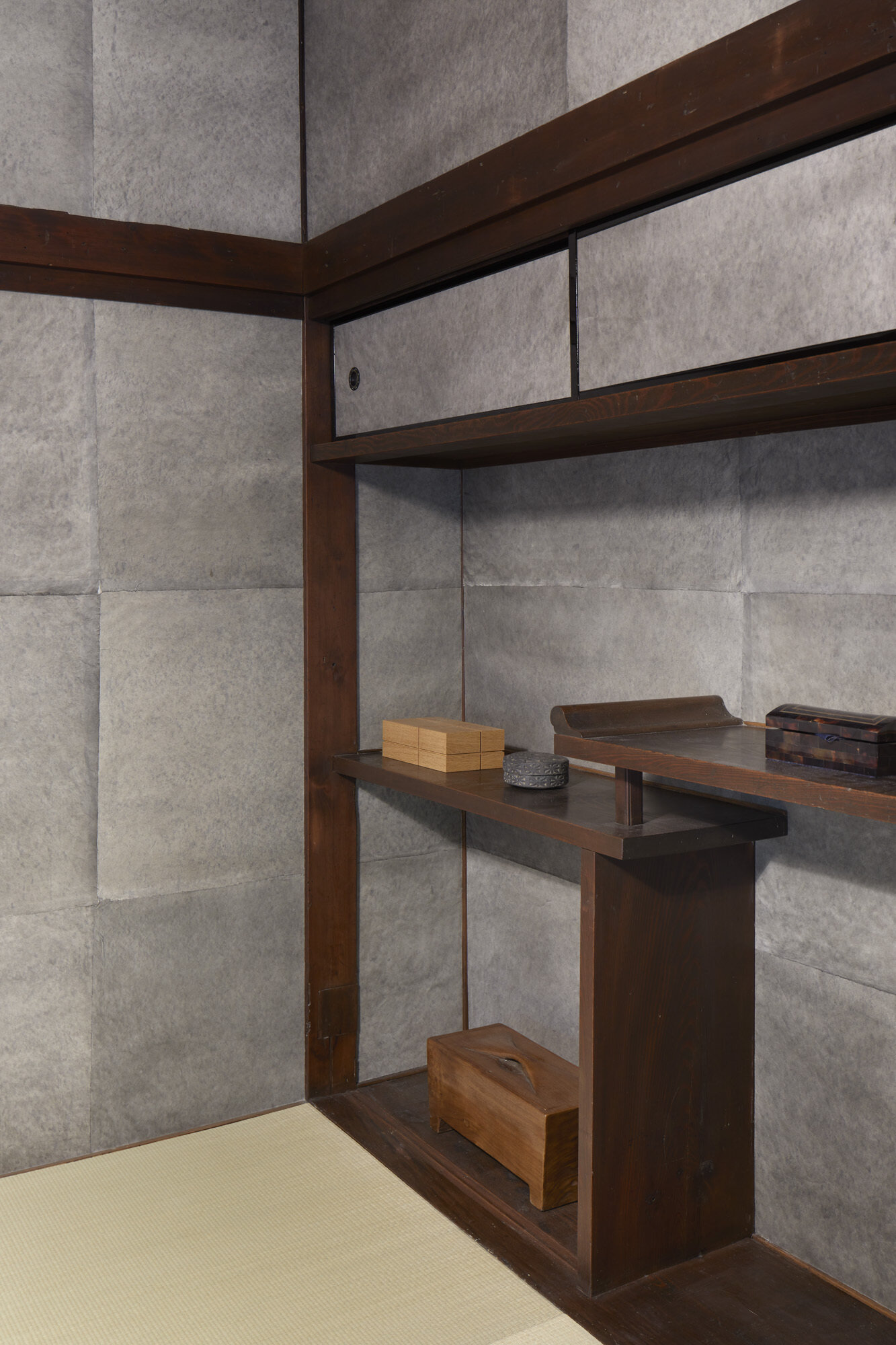
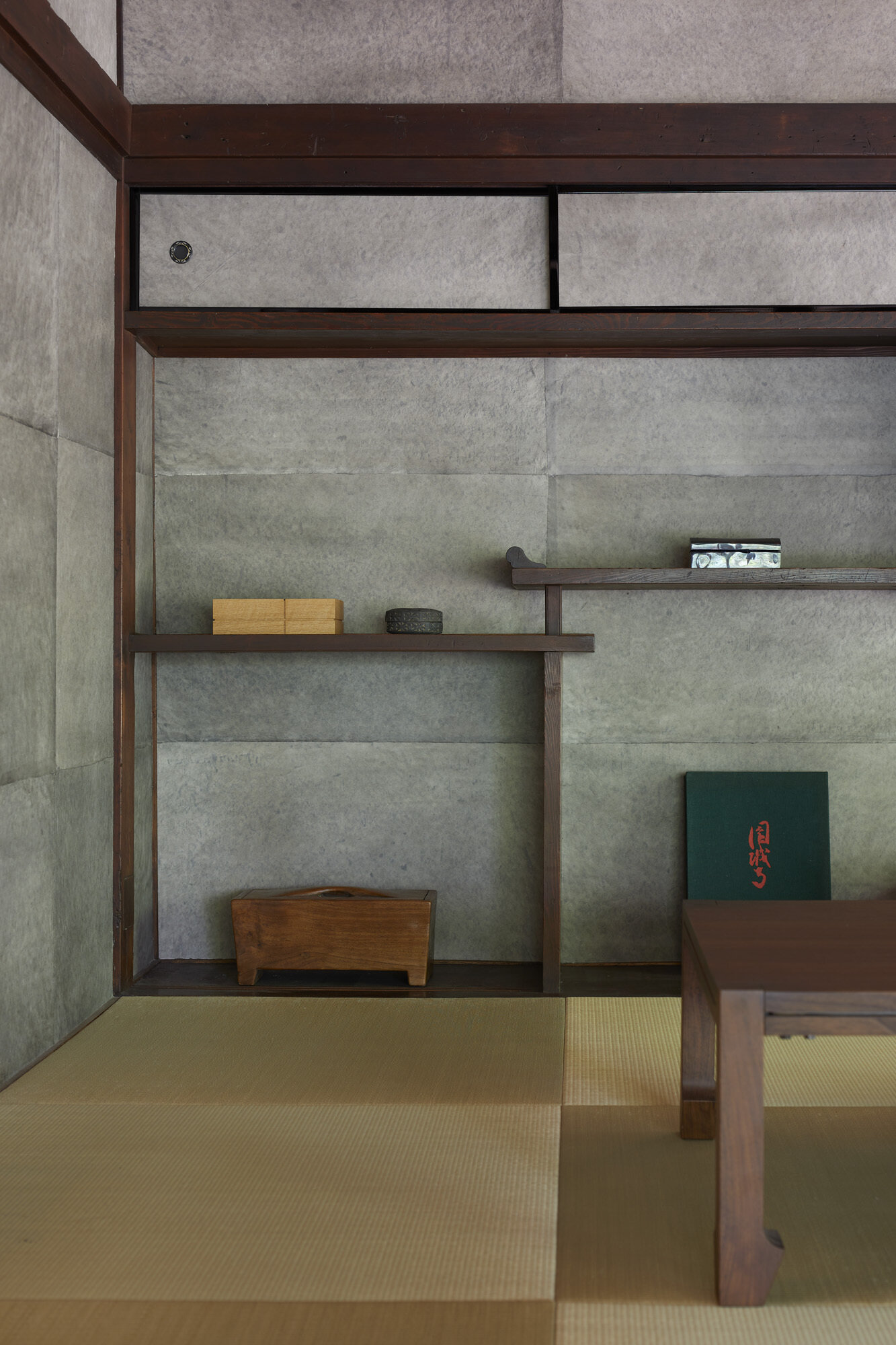
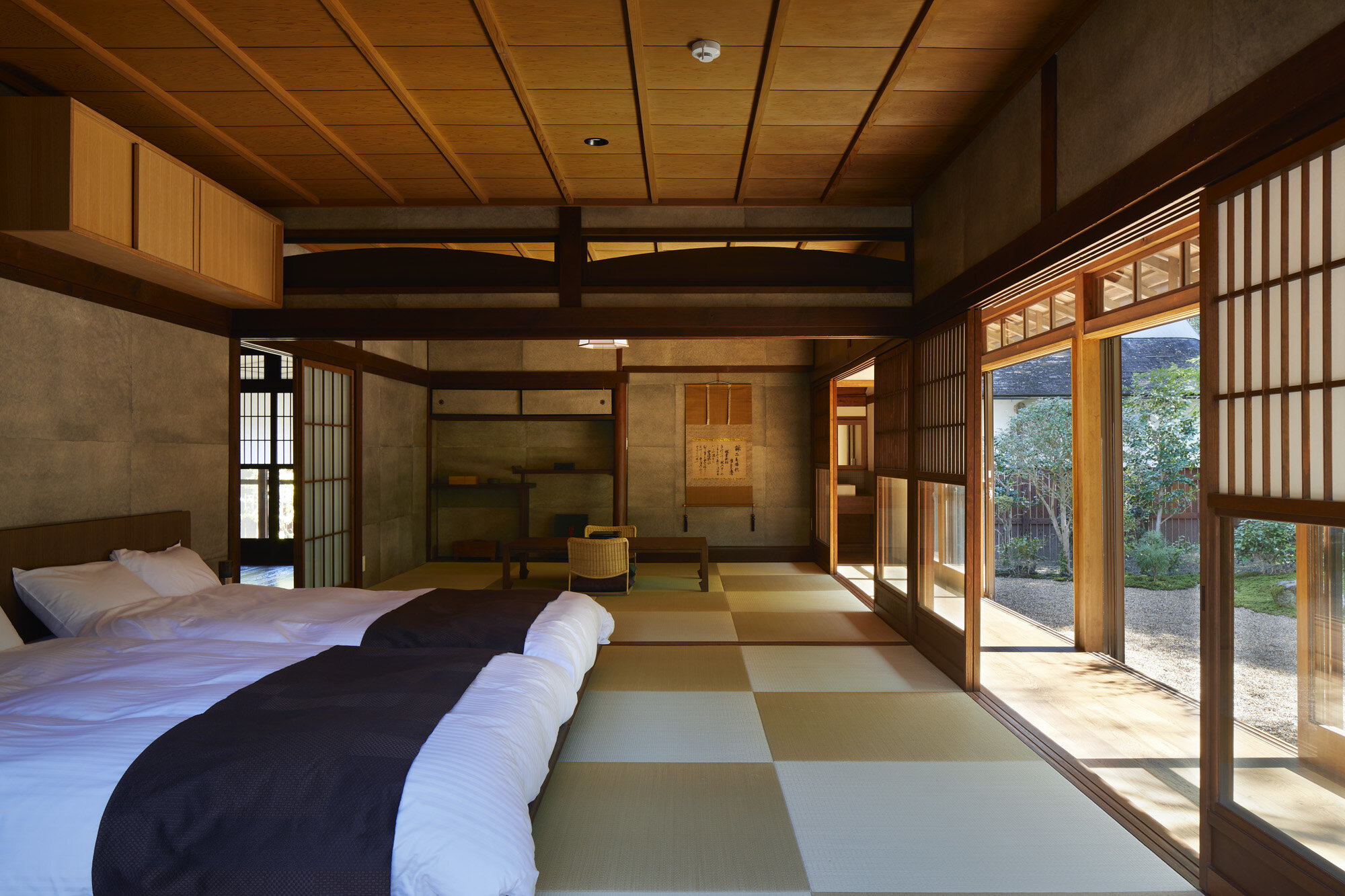
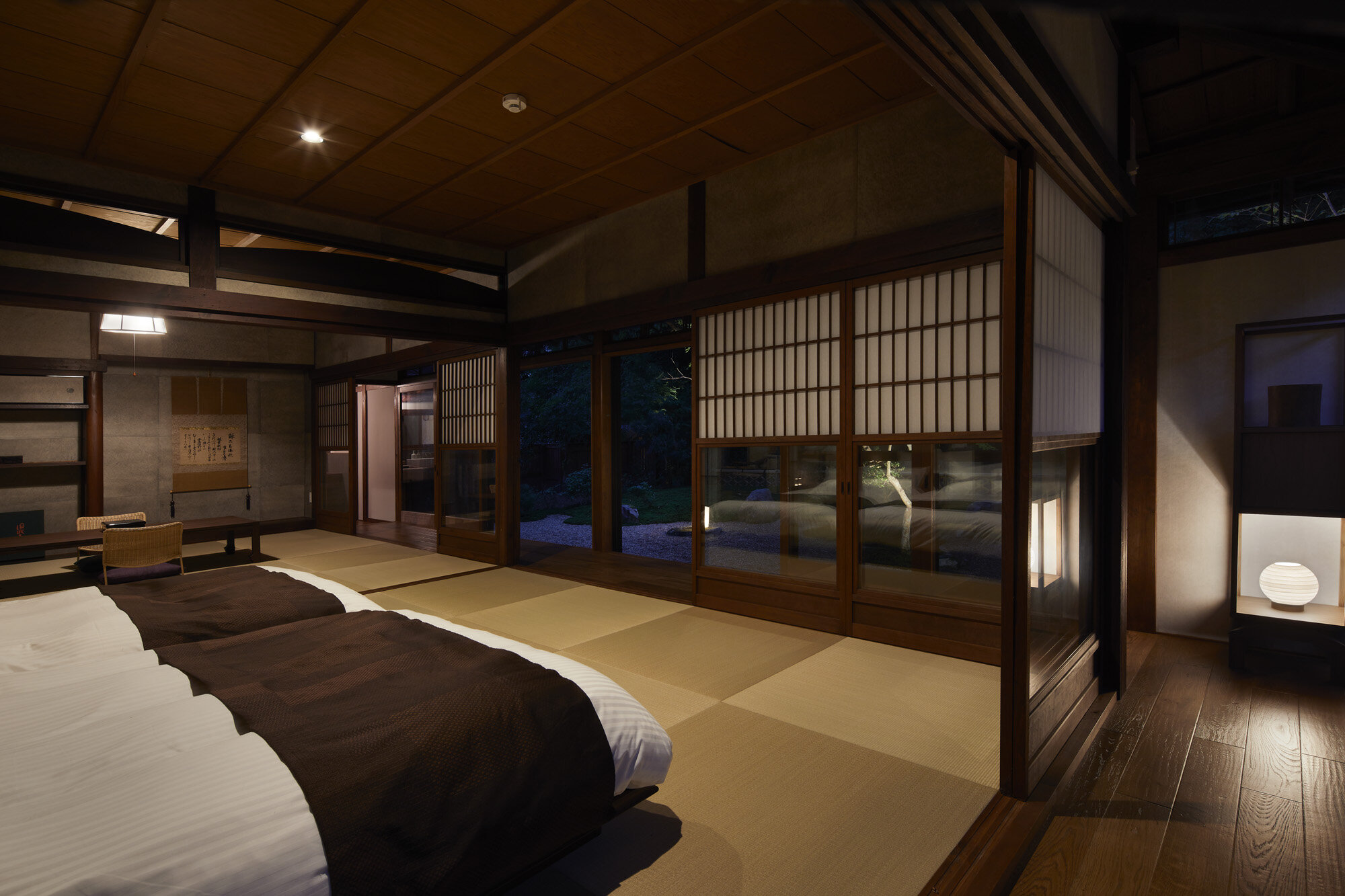
Japanese design studio Intentionallies has designed ‘Waqoo Mii-dera’. For the wall, they installed custom-made Washi papers made by ubushina.
photography: Toshiyuki Yano
Washi papers born from the idea to project porcelain
During this particular project, where priests’ residential area called Myogon-in within the premises of Mii-dera Temple in Shiga Prefecture was renovated into a guesthouse based on designs by Intentionallies, grey 'Washi' Japanese papers that ubushina created, were used on the whole walls.
Designer Shuwa Tei’s comment; “I want to create a space just like this porcelain.” became the opportunity to initiate the challenge to use porcelain as interior materials and “transfer” them into walls.
Intentionallies installed stripe pattern Washi papers called ‘Choji-biki’.
The metallic patina textured paper was also installed for the Mii-dera project.
By repeating trials and errors multiple times with a washi craftsperson who possesses high skills, washi papers with natural unevenness, just like potteries, were achieved, and they are now enhancing the space inside the temple.
After this project, they were able to add 10 more types of washi papers 'Utsushi' to ubushina’s current list of regular materials based on trial manufacturing done with the same craftsperson.
Kengo Kuma and Associates and Chisato Kogo Design Room designed Japanese Restaurant ‘Shichi Ju Ni Kou’ in Tokyo Station Hotel. For the open kitchen wall, they used fabric- textured metal sheet created by ubushina. photography: Satoshi Asakawa
Expressing hemp fabric by using electroplating
Ubushina’s specialty lies not only in the ability to replace traditional crafts with different materials, but also in the ability to deploy hybrid designs by combining traditional crafts with modern techniques.
A technique called electroplating was used for the Japanese restaurant ‘Shichi Ju Ni Kou’ that Kengo Kuma and Associates and Chisato Kogo Design Room designed.
“I was consulted by this designer about the wall material right above an open kitchen area inside the space where white fabric was set as its theme.
Since a real fabric could not be used for kitchen area, what I focused on was the usage of electroplating to express a fabric texture on metallic materials.
Since electroplating is one of the plating techniques used to express delicate patterns of fabric, it is used on creating metal emblems and jewelleries.” said Tachikawa.
For this particular project, hemp fabric was used as a cast to transfer its uneven surface patterns to a material created from combining brass and nickel together.
The detail of fabric-textured metal plate made with electroplating. (photography: ubushina)
The number of craftsmen/businesses that ubushina collaborated with from the year 2003 when it was established up until today goes well over 300, but Tachikawa, with sparkles in his eyes, says; “There still are so many materials and unknown techniques that exist in Japan that are not yet discovered.”
“I’ve been told by the electroplating factory that it was their first time to process materials for interior use. But we are pleased to have the opportunity to be present at special moment like this. For example, a brush called Kumano brush was once created for calligraphy and art, but now it’s being used as a makeup brush around the world. Just by changing the way you look at a thing, it can open the door to the new whole world for you, so it is important to maintain neutral point of view when you look at something without having any preconceptions against it”, Tachikawa said.
Ubushina’s ability to freely edit and combine anything they please, be it traditional or something new and innovative, is supporting designers to create spaces with unique designs they pursue.
words: IDREIT
YUDAI TACHIKAWA
Director of traditional handicrafts / Planner
Born 1965 in Nagasaki Pref. Established “ubushina” project that aims to create custom made objects, interior materials, furniture, and lighting equipment by fusing Japanese traditional craftsmanship and contemporary design. Tachikawa is expanding the field of Japanese craft through their haute-couture-made products for architects and interior designers. Received The Mitsui Golden Takumi Award in 2016.
t.c.k.w inc. TEL: +81 -3-6434-5203



















